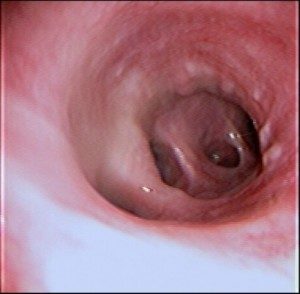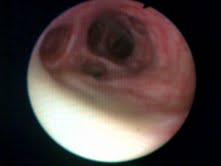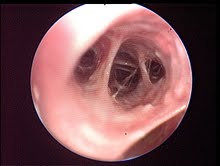Delicate Veterinary Care
Respiratory Conditions
Learn more about the respiratory services we offer below.

Respiratory Conditions

Bronchitis
Bronchitis is associated with the presence of a chronic cough and inflammation with no noticeable infectious disease. This disease has no cure; however, bronchoscopies can help veterinarians rule out other infectious diseases and can also assist in evaluating the disease’s severity and extent. In turn, this gives the owner a more comprehensive understanding of the illness. Bronchoscopies give veterinarians a better idea of how to proceed with medication plans.

Bronchopneumonia
Pneumonia is a common disease that affects dogs and cats stemming from either bacterial, viral, or fungal infections of the lungs. Bronchoscopies help collect fluid from the lungs to determine if an infection is present. This assists our veterinarians in selecting the most appropriate and effective antibiotic case by case. If untreated, pneumonia can be life-threatening, but appropriate antibiotic therapy can lead to a quick and simple recovery.

Bronchiectasis
Bronchiectasis leads to the dilation of the lungs and mucus filling in the organs. Changes associated with this disease can cause a chronic cough and a predisposition to pneumonia. Bronchiectasis can be spotted in radiographs (x-rays) with accompanying bronchoscopies allowing for a visualization of the airway. This is the only way to diagnose the disease and helps veterinarians differentiate between bronchitis, bronchiectasis, or bronchomalacia.

Collapsing Trachea/Bronchomalacia
The trachea is comprised of 35-45 C-shaped cartilage rings connected by ligaments. These rings are connected at the top by a muscle known as the dorsal longitudinal muscle. The trachea serves for air conduction, trapping, and transporting of debris and mucus secretion.
Certain breeds are predisposed to the development of collapsing trachea. The most common breeds include Yorkshire terrier, Chihuahua, Pomeranian, and Maltese. Collapsing trachea occurs because the cartilage in the tracheal rings becomes flaccid and less rigid. Many theories exist as to why this change occurs, but no studies have shown the exact cause.
Clinical signs of Tracheal Collapse
- Cough
- Noisy Breathing
- Difficulty Breathing
- Decreased Ability to Exercise
Fainting (severe cases)
Diagnosis and management:
Other diseases affecting the lungs or trachea can cause similar symptoms. The diagnosis needs to be obtained by chest x-rays and endoscopy of the respiratory tract (bronchoscopy). Other diseases that can appear similar include laryngeal disease, bronchitis, kennel cough, and even heart disease. If collapsing trachea is not severe, it can be managed with medications and lifestyle changes. Certain factors can greatly worsen a dog’s ability to live with collapsing trachea. These factors include obesity, severe dental disease, increased levels of activity, and activity during warm weather.

Collapsing trachea is a progressive medical condition that cannot be cured. Progression of the condition can be slowed through proper medical management. Surgery is also an alternative treatment for collapsing trachea; however, it is not a cure. Surgical intervention can significantly improve a dog’s comfort level and quality of life upon completion of the procedure. Sometimes stents are effective to help open up the trachea. The decision to use a stent instead of surgery is based mainly on the location of the tracheal collapse. In some cases, neither surgery nor stents will alleviate the clinical signs of difficulty breathing or coughing. Patients should always be thoroughly evaluated with a bronchoscopy before surgery or stent placements are performed. Even after surgery, chronic medical management is crucial to try and prevent the progression of the collapsing trachea.

